Dry Aging Beef at Home: A Thermal How-To
If you want to spend some real money for dinner, go to a restaurant and order a 45-day dry-aged steak. It’s going to cost a significant chunk of change. But why should we reserve such rich and delectable foods for super-special occasions that we’ll have to pay for the next month? Let us, instead, dry age our own beef at a fraction of the cost!
Yes, friends, you can dry age beef at home! With the right tools, you can take a loin of beef and turn it into a stack of dry-aged steaks in your own kitchen. Here we’ll take you through the process and give you the confidence to transform a humble prime-grade loin of beef into something that’s really good.
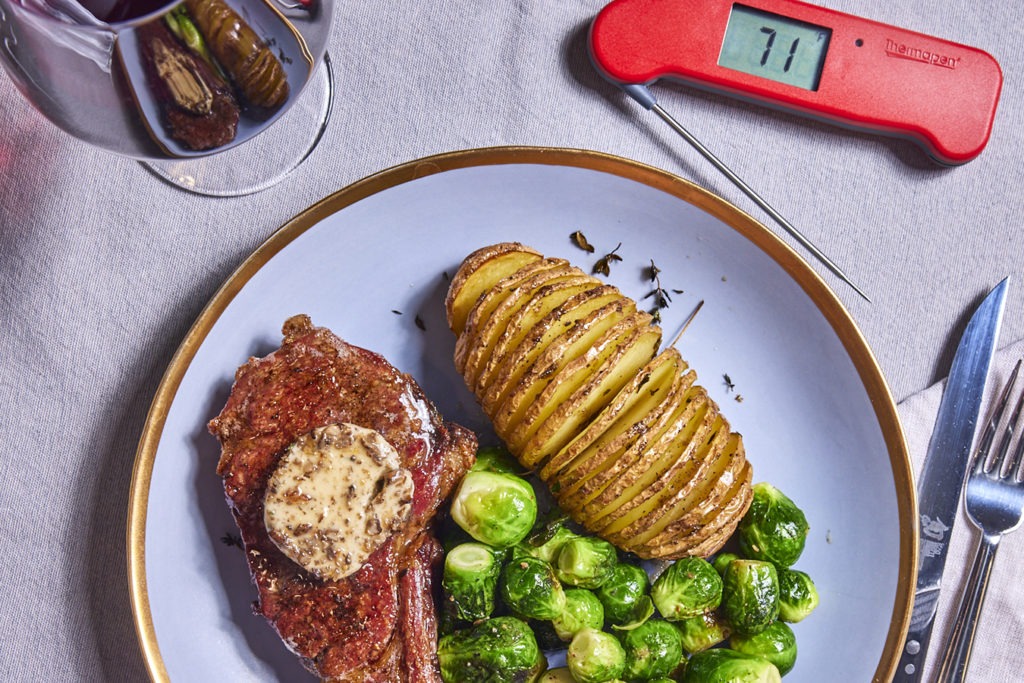
What is dry-aged beef and why do we dry age it?
Dry aging is exactly what it sounds like. It is the careful, controlled aging of meat in a specific environment that promotes certain changes in texture and flavor. It is much like the aging of cheese: over time, enzymes rip proteins apart to change flavors and create tenderness, and bacteria act to alter the flavor of the meat while water is slowly evaporating, condensing the flavors into a smaller package.
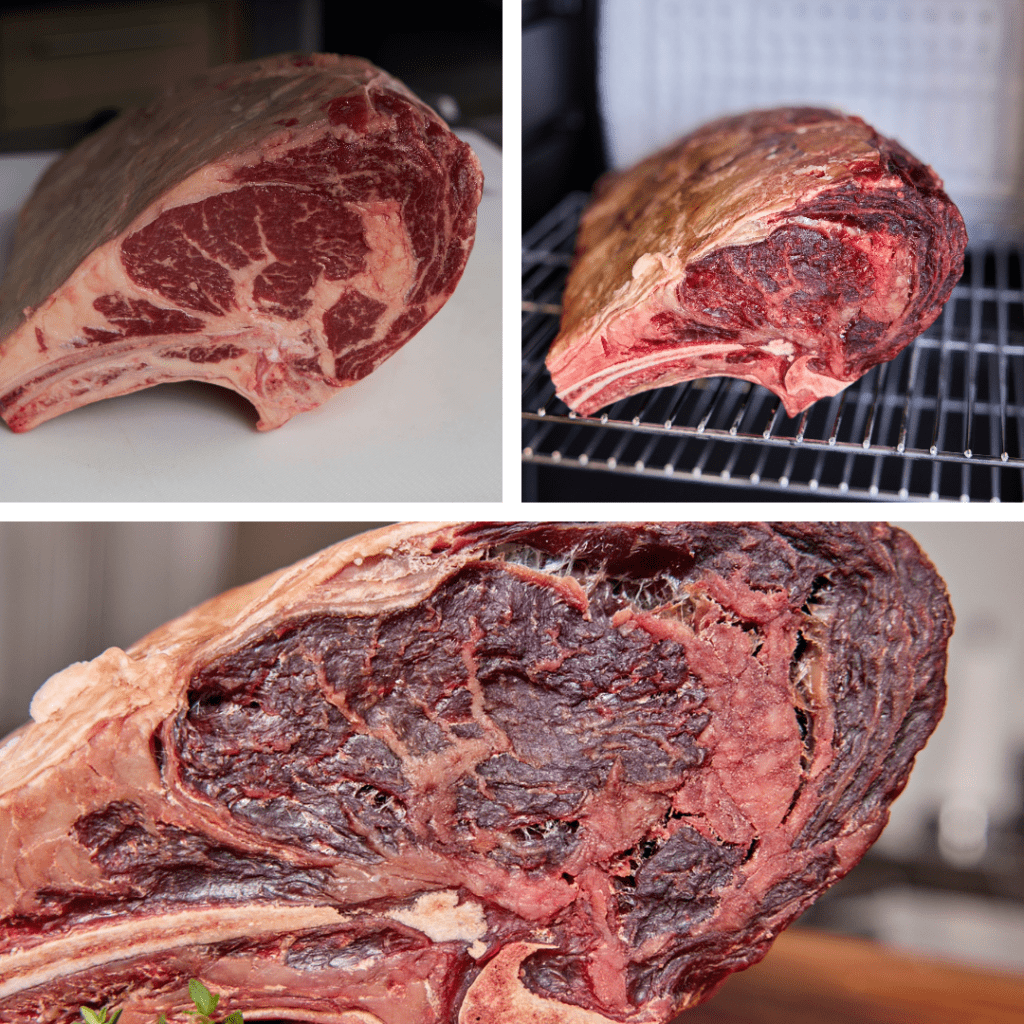
It is not rotting. Rot implies uncontrolled bacterial and fungal incursion, and that is not the case here. We control the temperature to prevent the growth of pathogenic bacteria and mold so that we mostly deal with enzymatic reactions in the meat and a little bit of non-toxin-forming bacteria.
All of this comes together to create steaks that are richer, meatier, more tender, and generally more flavorful. And that is ultimately the appeal: we take one of our favorite foods and make it even better.
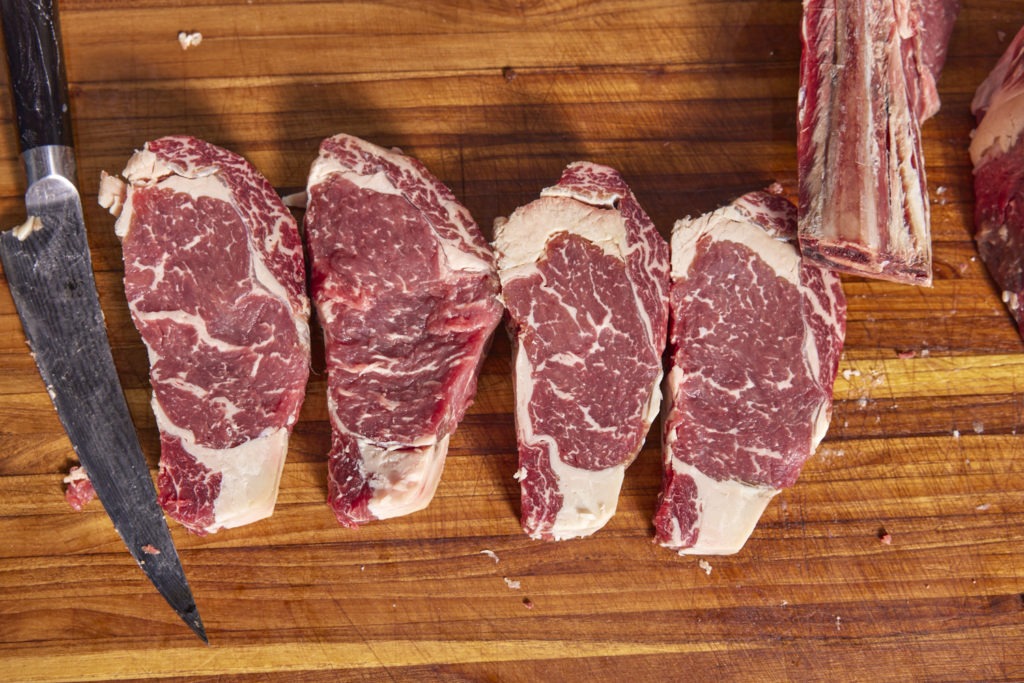
Why dry-aged beef costs so much
So why is dry-aged beef so expensive? There are a few answers to that, the chief one being waste. As the beef dries, the outside centimeter or more dries out too much to be eaten later, and any bacteria or mold that does form on the meat will be limited to the exterior. So butchers trim off all of the desiccated meat and fat from the finished loin before cutting steaks out of it. And, of course, there is the water weight that has been lost during the drying.
The butcher paid a per-pound price for the whole loin at the beginning of the process, and if he were to charge you only for the steak that you get at the initial rate, he would be losing all the money thrown away in dried out, unusable beef trim and water, and that’s bad business. The loss of weight can be up to 39% of the original loin weight! So you end up paying for that shrinkage as well as what you actually take home.
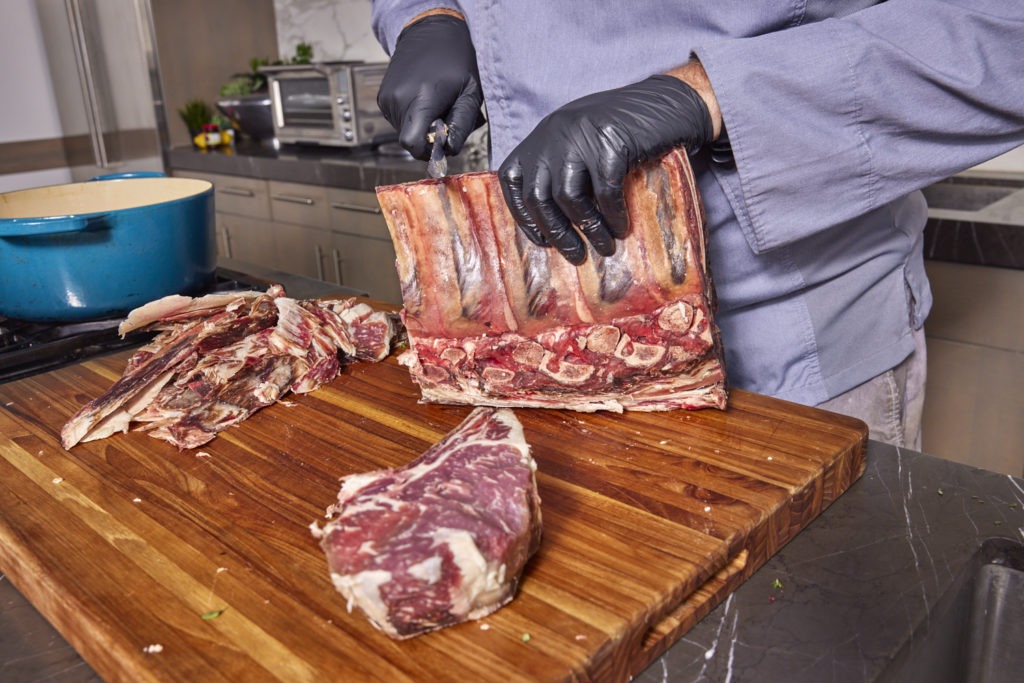
In addition to the massive shrink cost, there is also just the time and storage you’re paying for. Keeping a loin in a fridge for 45 days before you recoup your money is rough. So you pay for that risk.
But there’s one more cost in dry aging beef: prestige. Yes, you’re paying for the luxe of the product itself. They can charge you more for it because it carries a cachet—like fresh truffles or caviar—that extends beyond the ingredients as such. So, you pay to be fancy.
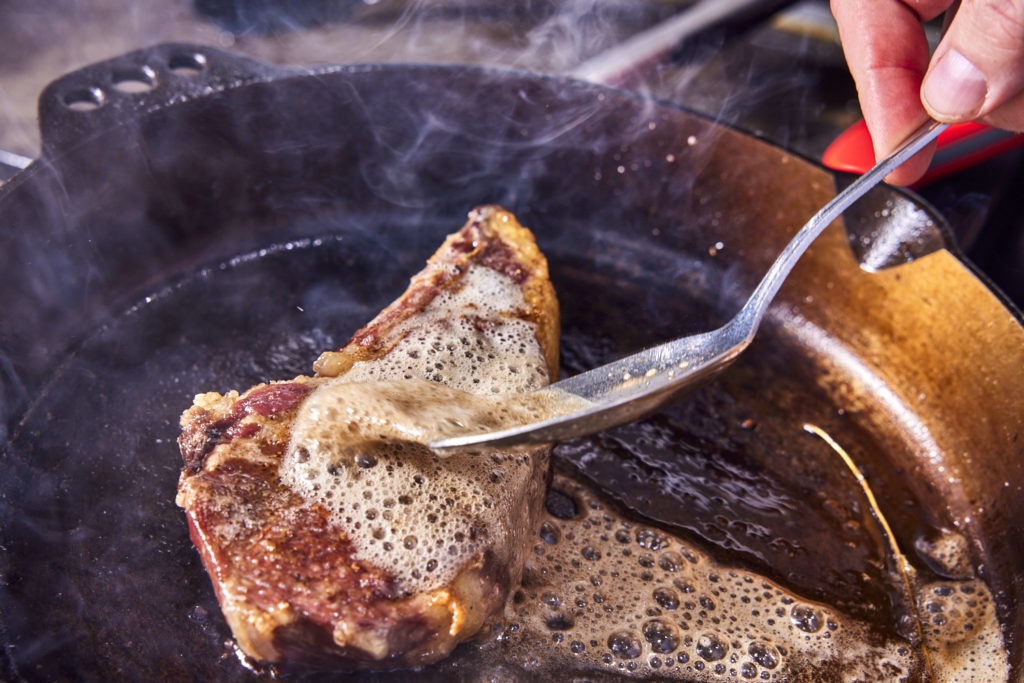
The cost of dry aging beef at home
We’re not going to sugarcoat this. Dry aging at home is still expensive. But it starts to pay for itself pretty quickly; for this post, we bought a whole, bone-in rib roast, 9.27 pounds, at $16/lb, totaling $148.32. And you do need a place to age it. We bought a small wine fridge with adjustable temperature (very important!) for about $200. So we’re about $350 deep on these steaks. But seeing that a large steak dinner at a prime steakhouse can easily run above $85, that cost already starts to look good! If you can get just four good steak dinners out of that loin, you’ve broken even, and there are at least four big steaks in that loin!
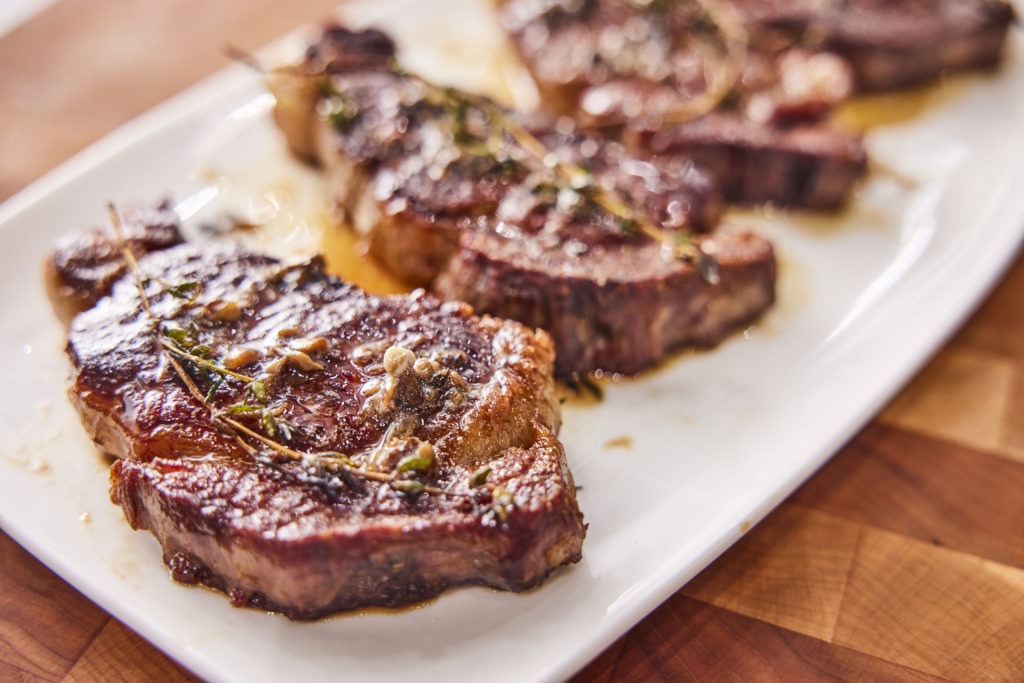
You’ll also need a Thermapen® ONE for when you cook the steaks and a NODE™ Wi-Fi Temperature/Humidity Monitor to monitor the refrigerator temperature and humidity, but—like the fridge—those are tools you can use all over your house and kitchen for years to come, so that cost amortizes out really quickly (ask your accountant friends about that).
All in all, buying dry-aged meat at a restaurant is a losing game. Making it at home is the way to go!
Dry aging: temperatures and environment considerations
As we mentioned above, dry aging is accomplished in a controlled environment. But what environment? It must be cool, and it ought to be fairly humid.
By ‘cool’, we mean between 30 and 39°F (-1 and 4°C). This is beneath the temperature danger zone, and any pathogenic bacteria that are present will be slowed to a mere crawl. Put your NODE in the fridge, hook it up to your Wi-Fi and have it monitor the refrigerator temperature throughout the aging process. If the fridge blows a fuse or its condenser breaks down, you’ll be alerted to the failure through the free Thermoworks App as soon as the NODE feels the temperature rise above your alert temperature. You can move the expensive cut of meat to another fridge while you fix the problem.
Temperature is one parameter; humidity is another. Most sources agree that you want to keep the relative humidity between 60% and 85%, which shouldn’t be hard. NODE with humidity monitoring can keep an eye on the relative humidity in the aging chamber as well. If you find that the humidity is too low, you can put a bowl of water in the ager with the meat. Keep an eye on it, checking every day or two to make sure there is still water in the dish.
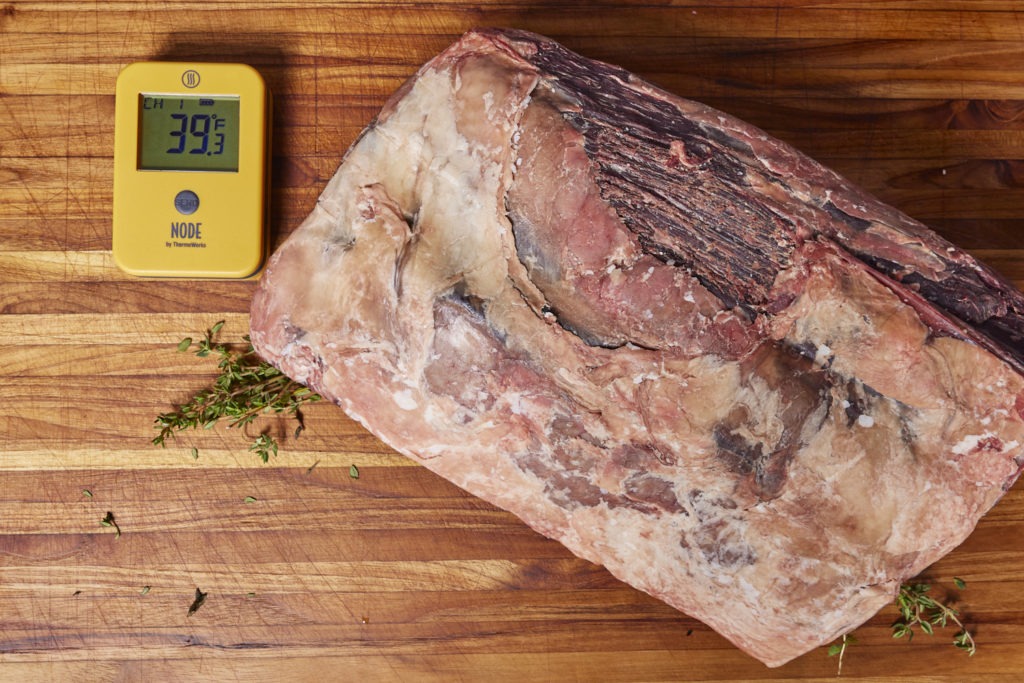
Lastly, you also want the air to be moving in the aging chamber. We set up a Smoke X™ outside the fridge with a Billows® BBQ Control Fan inside the fridge. We set the target temperature for the Billows channel to a high temp and left the air probe at room temperature. Smoke X thought the “fire” needed more air and blew the Billows fan continually for 45 days, gently and quietly circulating the air in our aging fridge.
How long does it take to dry age beef?
Though you can dry age a beef loin for as long or as short a time as you like, there will be no really noticeable difference until you get to about 28 days. And while some prestige restaurants tout their 90–120 day aged steaks, the inherent funk that begins to accumulate at those advanced ages can be … off-putting to some. A nice 45- to 60-day process is about what most people like. In that time, the nuttiness and savoriness of the beef hits a nice balance with the funkiness.
But even that time has other factors at play. If we age in the lower end of the temperature range (around 30°F [-1°C]), the enzymatic processes are also slowed, so it takes longer to achieve the same aging results as if we age at the top end of the range, 35-39°F (2–4°C). One study showed that meat aged at the top of the acceptable range aged twice as fast as meat aged in the cooler temp.
How long you choose to age your meat—and at what temperature—is up to you, but the monitoring provided by NODE will allow you to make sure your aging chamber is treating the meat the way you want it to. But the sooner you start, the sooner you can have your steaks!
What beef should I dry age?
The higher the grade of beef, the better it is for dry aging. The enzymes that work in the meat also work on the fat, making it tastier and softer. In fact, a lot of the dry-aged flavor we’re looking for comes from the aged fat. So a prime-grade loin is best. You can certainly dry age a whole tenderloin, though the waste ratio on that cut is rather high. A strip loin or a bone-in prime rib is the best choice.
Why bone-in? Because you weren’t going to eat those bones anyhow. With a bone-in rib, you get the effects of aging without the extra waste you’d lose if you used a boneless version and then had to trim all the dried gunk off of it. You cut it off the bones, and that part of the trimming is done. If you choose to cook it bone-in, there’s still no extra loss.
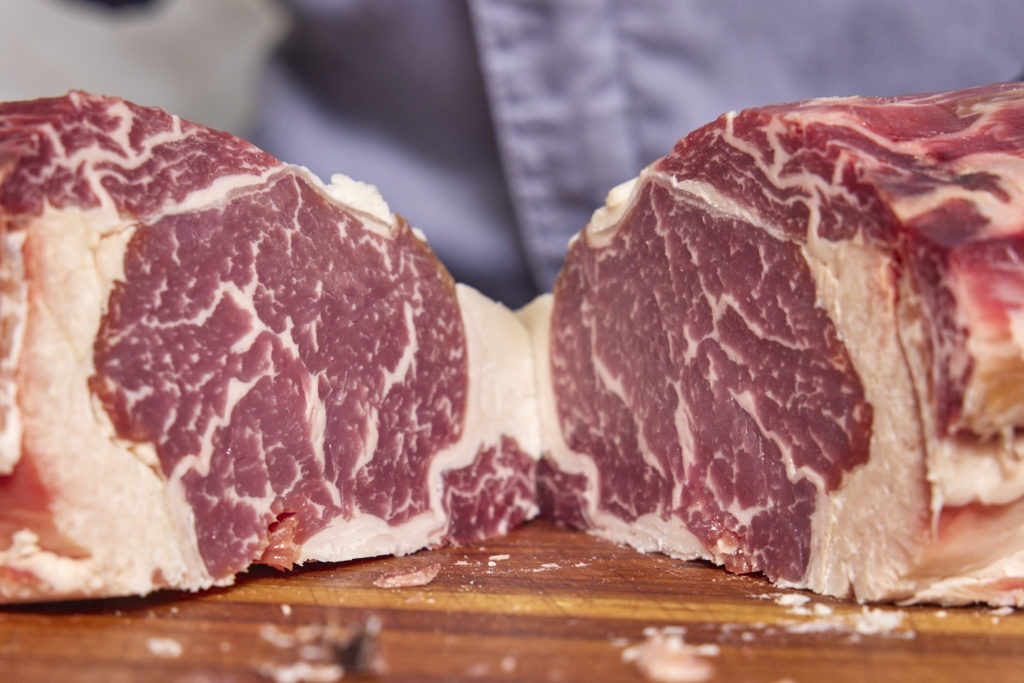
And we keep saying whole loins. Can’t we just dry-age a single steak? No. We age whole loins (or large partial loins) because of the waste. On our prime rib, we cut nearly a steak’s worth of meat off of the combined end caps. If we’d started with just one steak, it would be a giant piece of inedible jerky.
Get yourself a piece of meat no thinner than four inches to age. But the longer the piece is, the better your dried surface-to-meat ratio will be.
Leave as much fat on the surface of the meat before aging as possible. Don’t cut off any fat caps if present! The water will escape from the meat no matter what, but the presence of the fat cap will help reduce the amount of meat that you trim later on.
Trimming dry-aged beef
Once you’ve aged the beef to your liking, you need to trim it. This may seem intimidating, but there’s little art to it. Cut until the meat looks meaty: red like steak, not brown like dried meat. Take off any of the fat cap that looks weird, bad, or discolored. You’ll be able to tell by looking at it how far down you need to trim. Let the meat guide you!
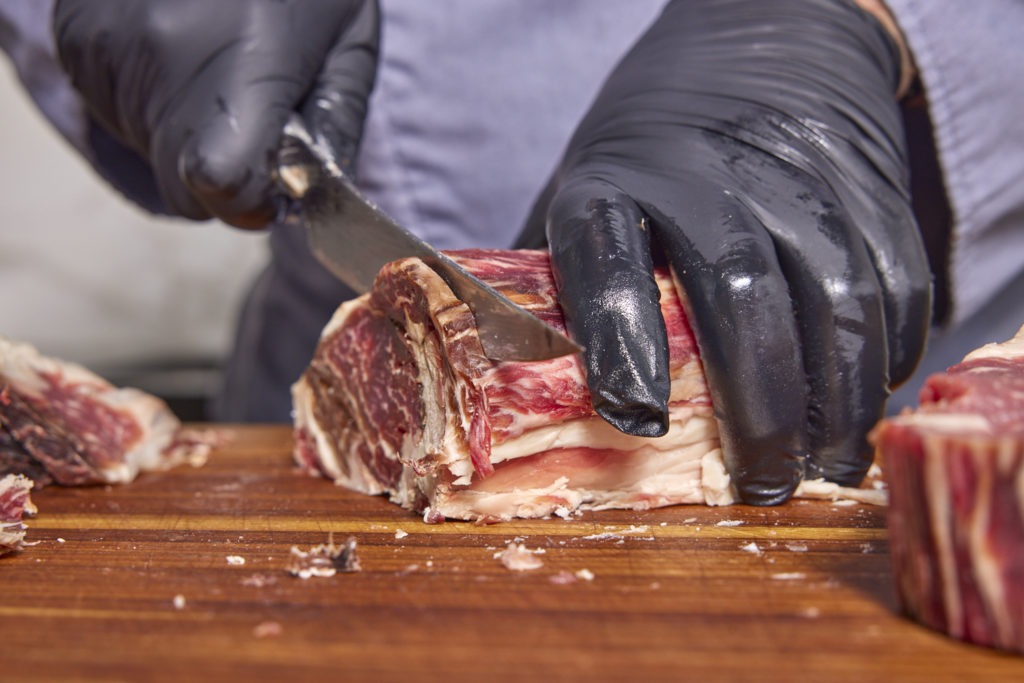
Cooking dry-aged steak
You have put some significant time and effort into this meat at this point. Don’t trust that investment with a cheap box-store thermometer! It’s time to break out your Thermapen ONE and, if you’re reverse searing some big, bone-in steaks, your ChefAlarm so that you can reverse sear them. There’s no difference in doneness here. Medium rare is still 130–135°F (54–57°C), salt and pepper are still the best seasonings, and a butter baste will still be amazing. You will find, however, that dry-aged steaks take a crust far better than fresh steaks. It’s almost instant, and much “crunchier” than the crust on a regular steak.
For a steak like this, we like using the same method we used to cook Japanese Wagyu steak, but with a butter/herb baste at the end. That being said, cook it how you like it!
Conclusion: temperature, time, humidity, and economics
Get yourself a loin of meat, preferably a strip loin or a bone-in rib loin. Don’t trim it. Put it in a refrigerator between 30 and 39°F (-1 and 4°C). Monitor that temperature—and the relative humidity—with NODE. Have a fan (maybe Billows) circulating the air and keep a bowl of water in the fridge if the humidity is too low. Give it 45–60 days, trim off anything that looks unappetizing, and cook those precious steaks in a hot skillet, basted with butter, until they are 5°F (3°C) below your target final temperature (check them with your Thermapen ONE). Serve to your family or friends who will hopefully appreciate it! Or butcher the steaks out, vacuum seal them, and freeze them for use one at a time.
Doing this once is roughly a break-even proposition. Do it a second time and you start to really get ahead on the economics of the process.
Get the right tools, and dry-aged beef can actually become part of your regular culinary life. Happy cooking? No. Ecstatic cooking!
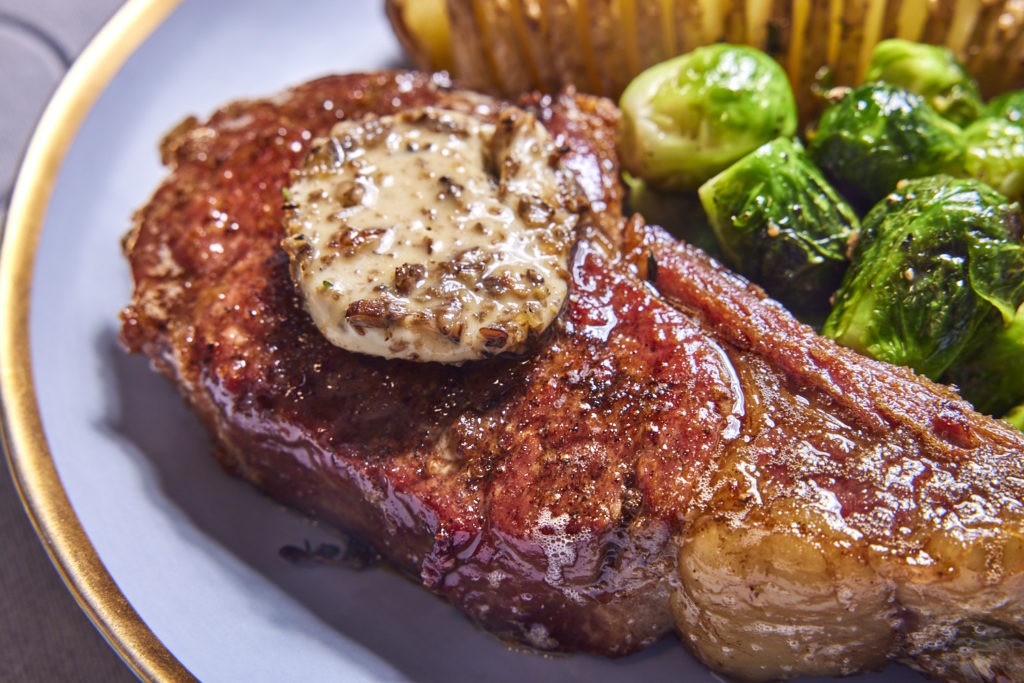
Shop now for products used in this post:
Sources:
This post drew on information published in Journal of Animal Science and Technology.


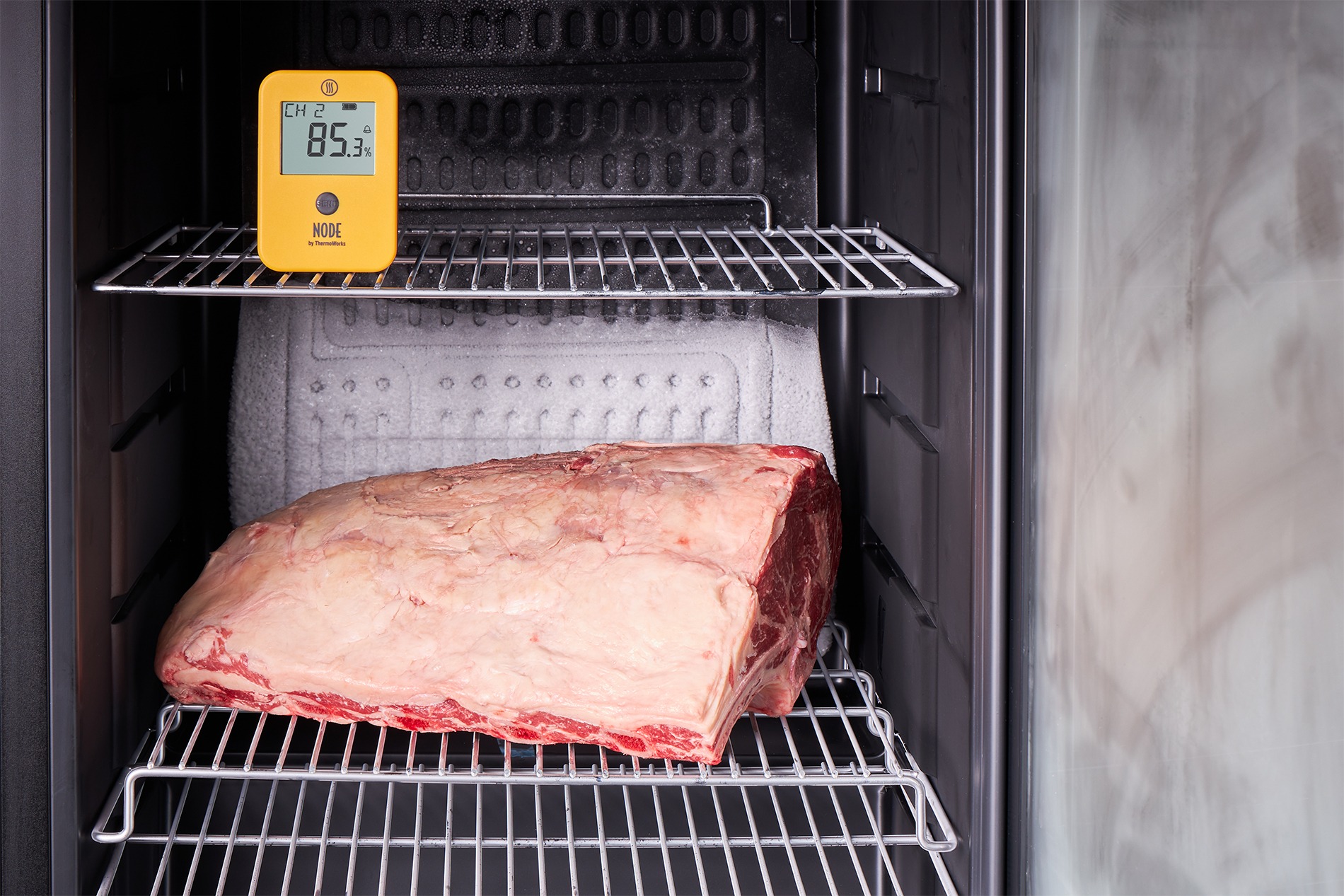
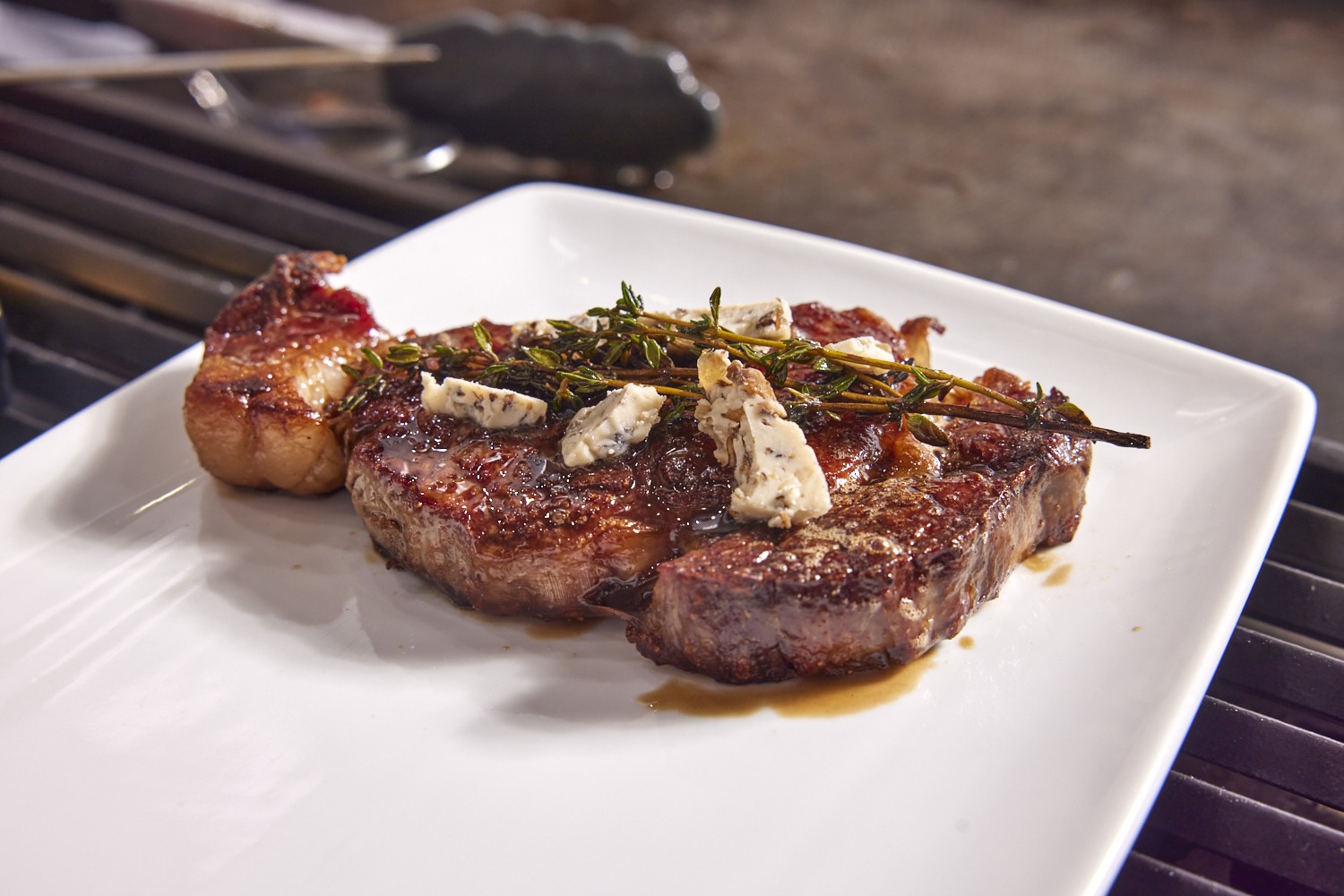
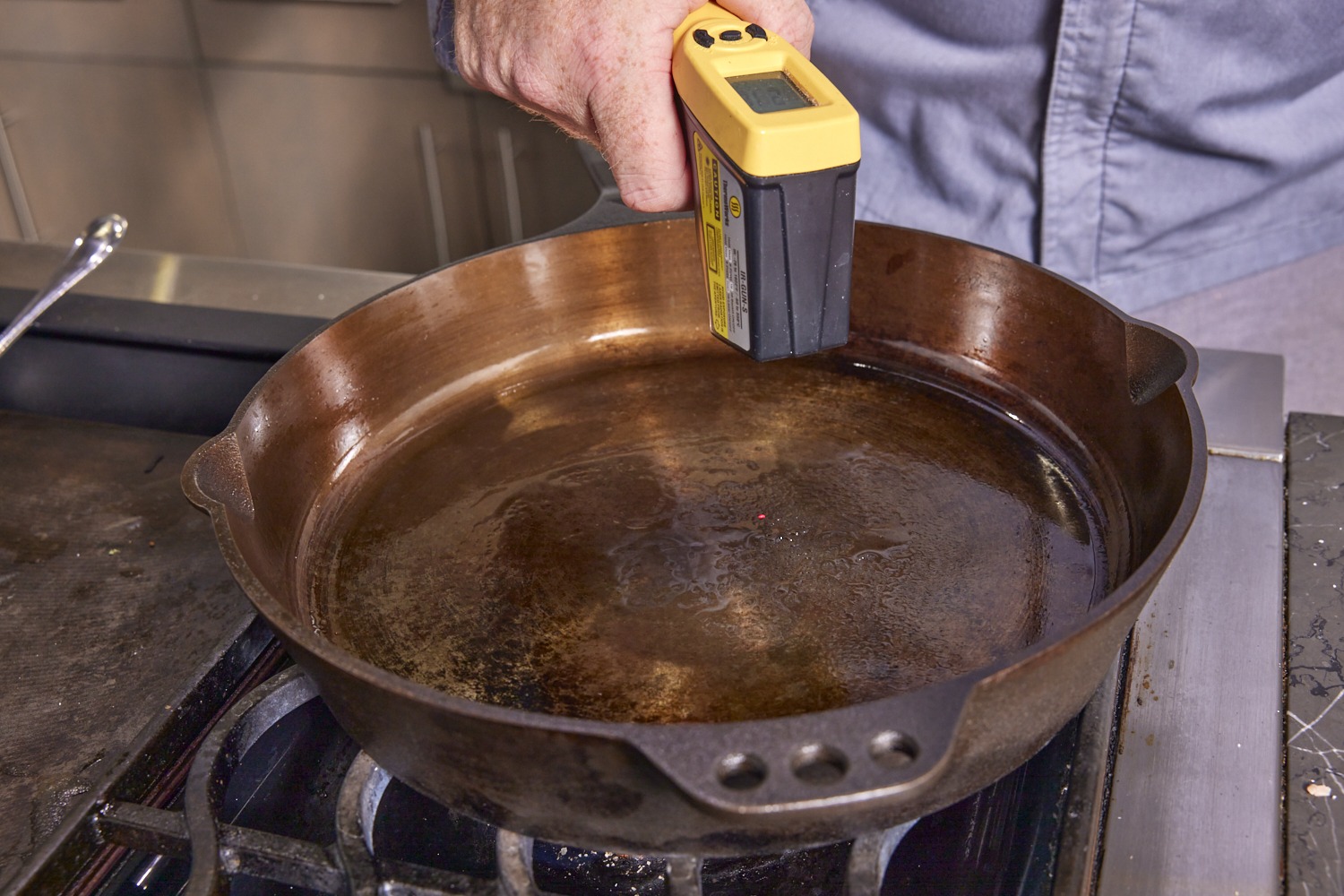
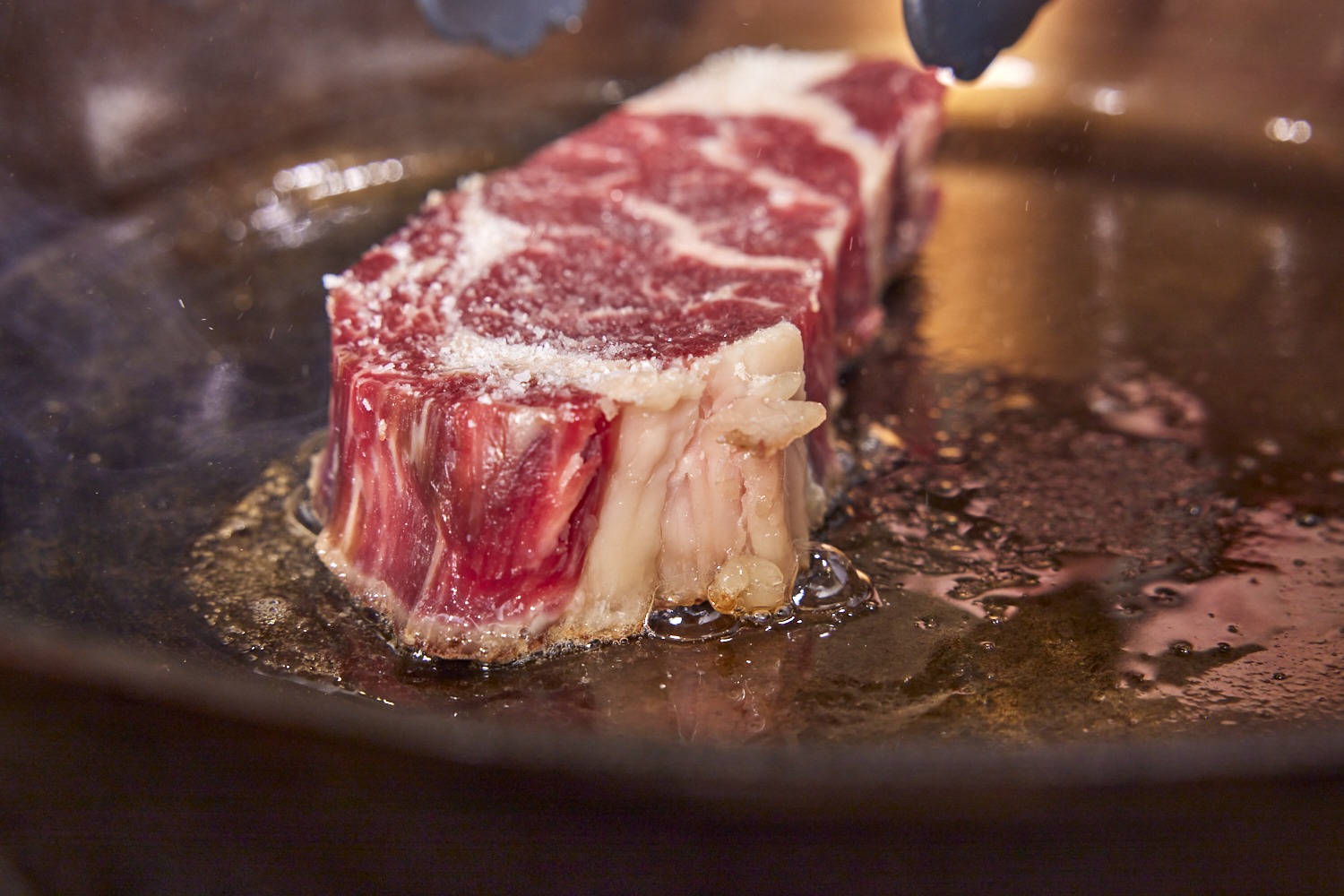
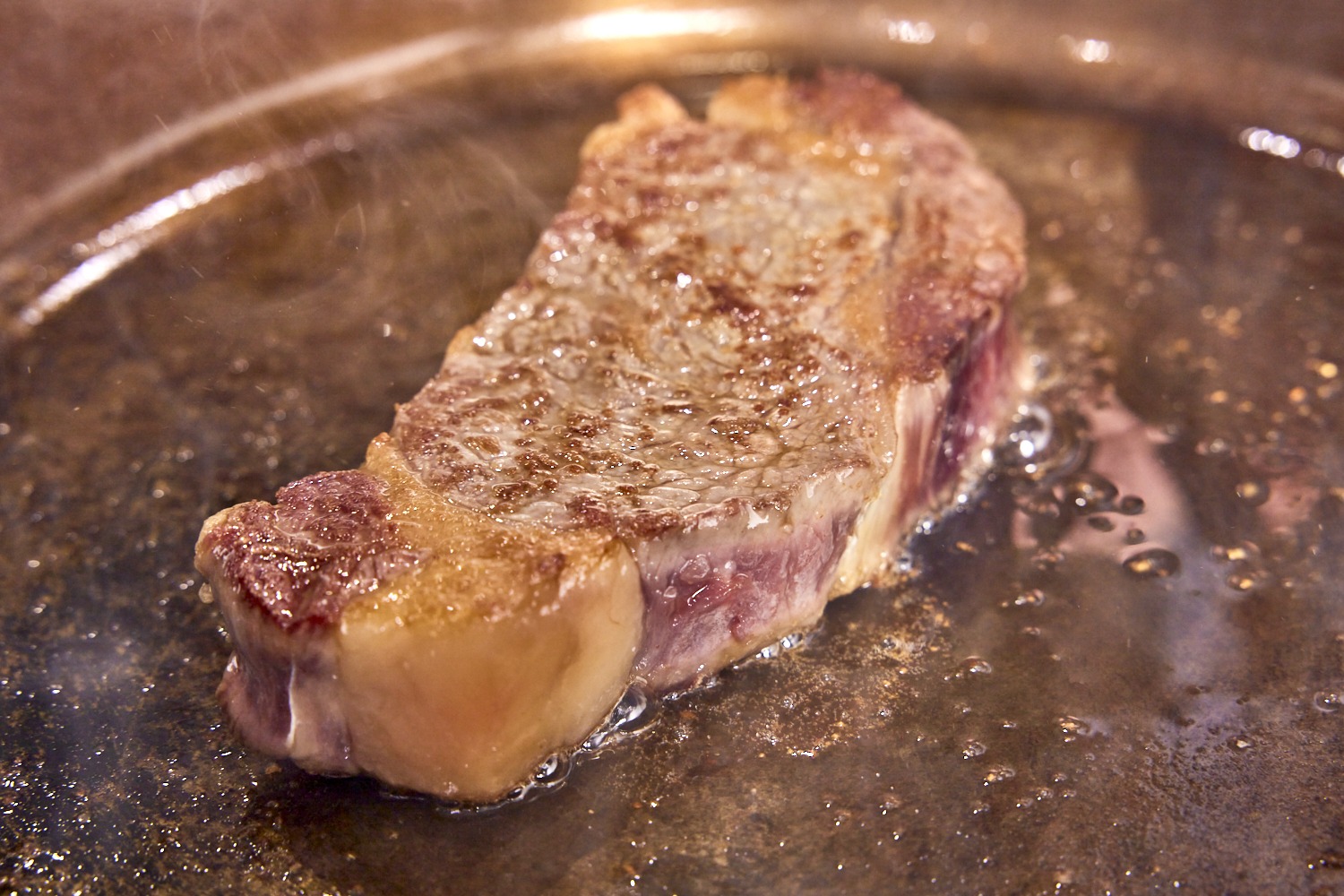
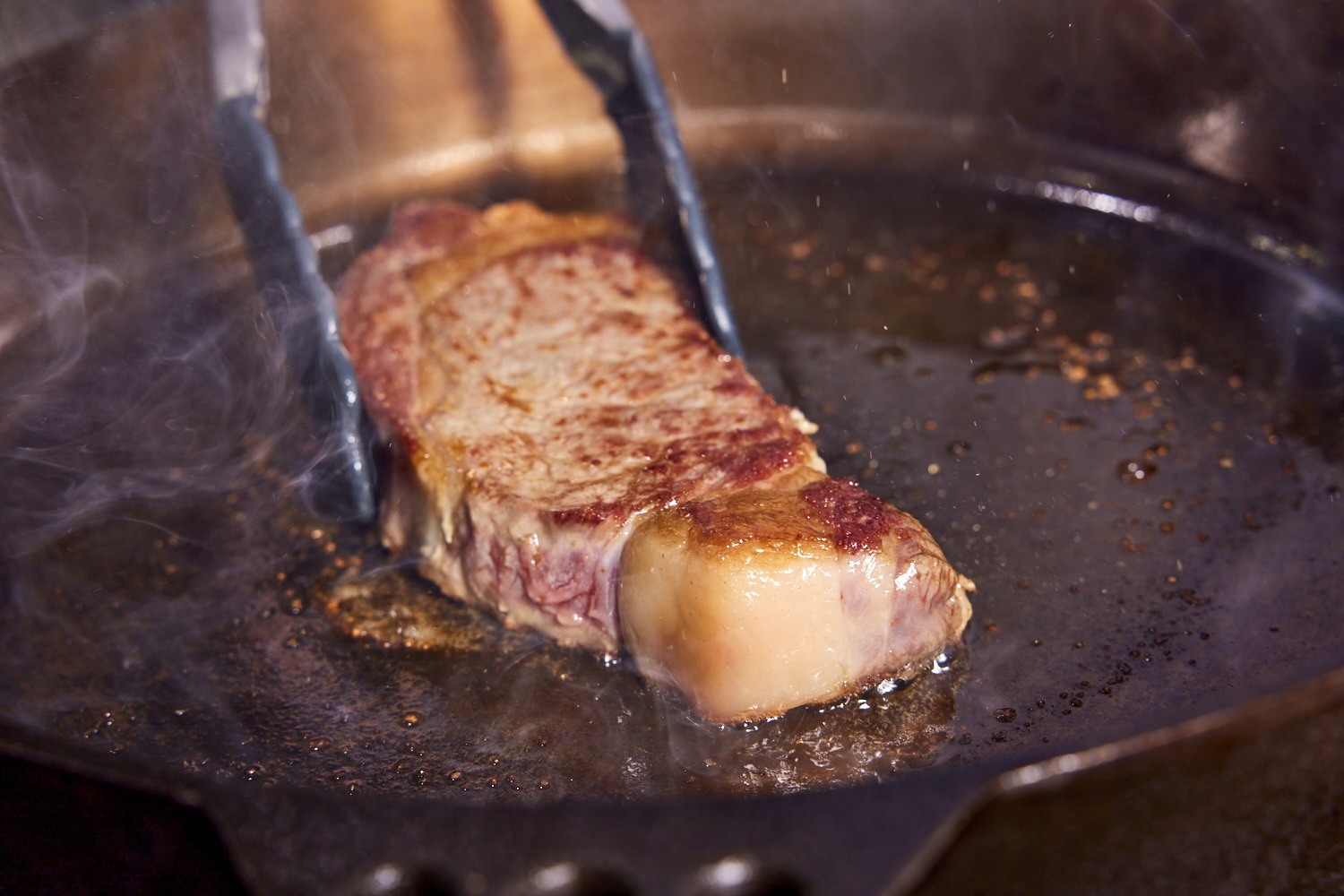
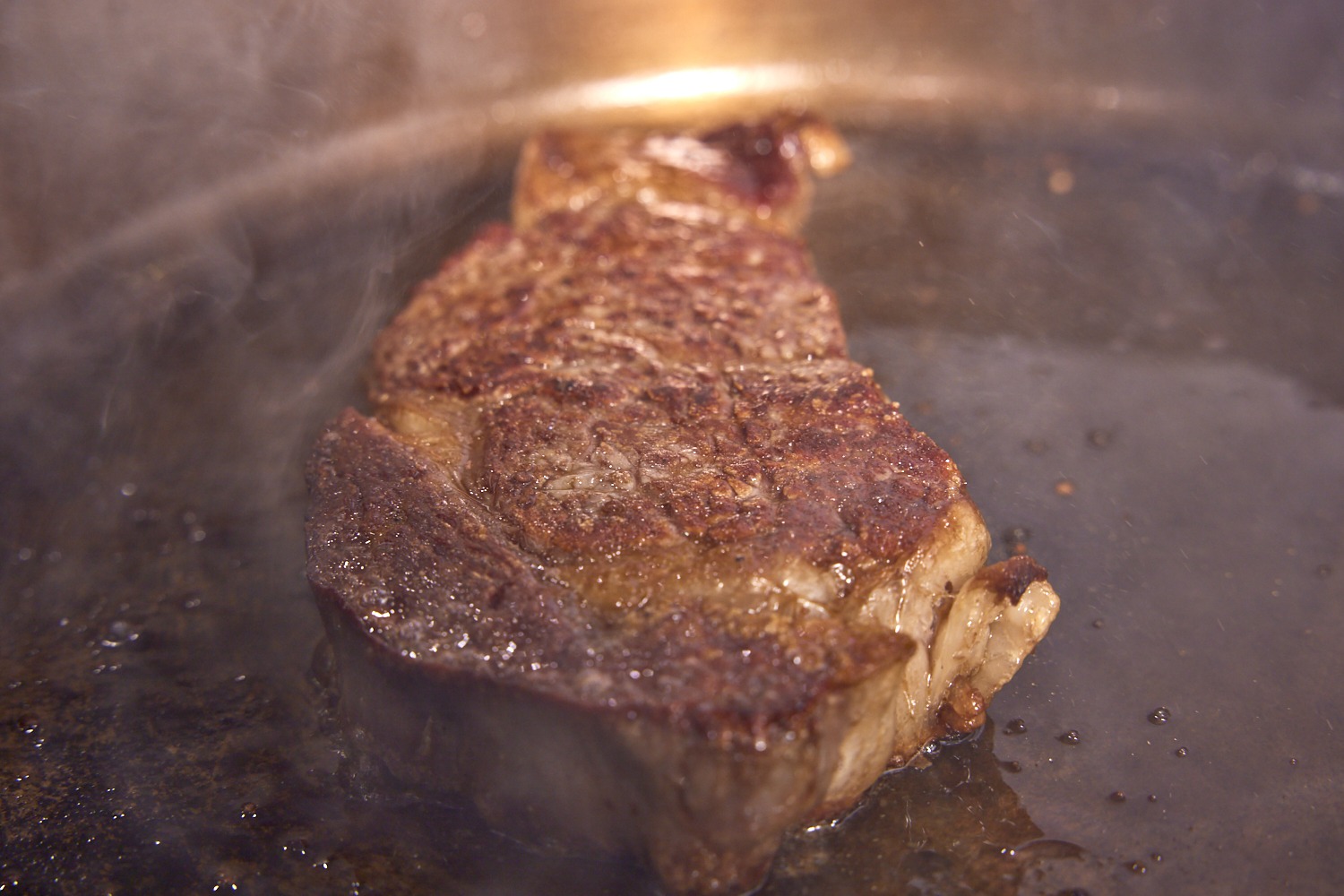
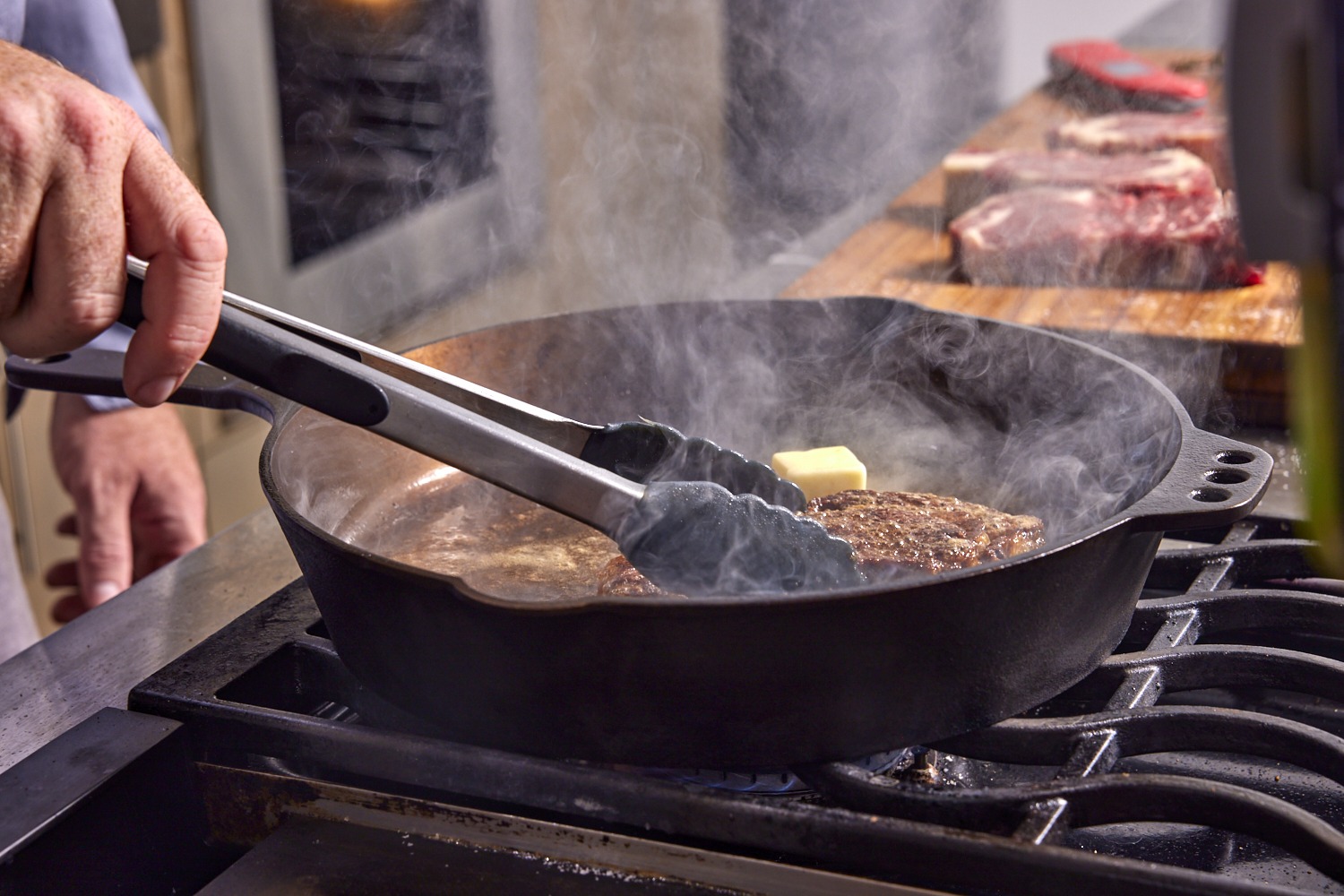
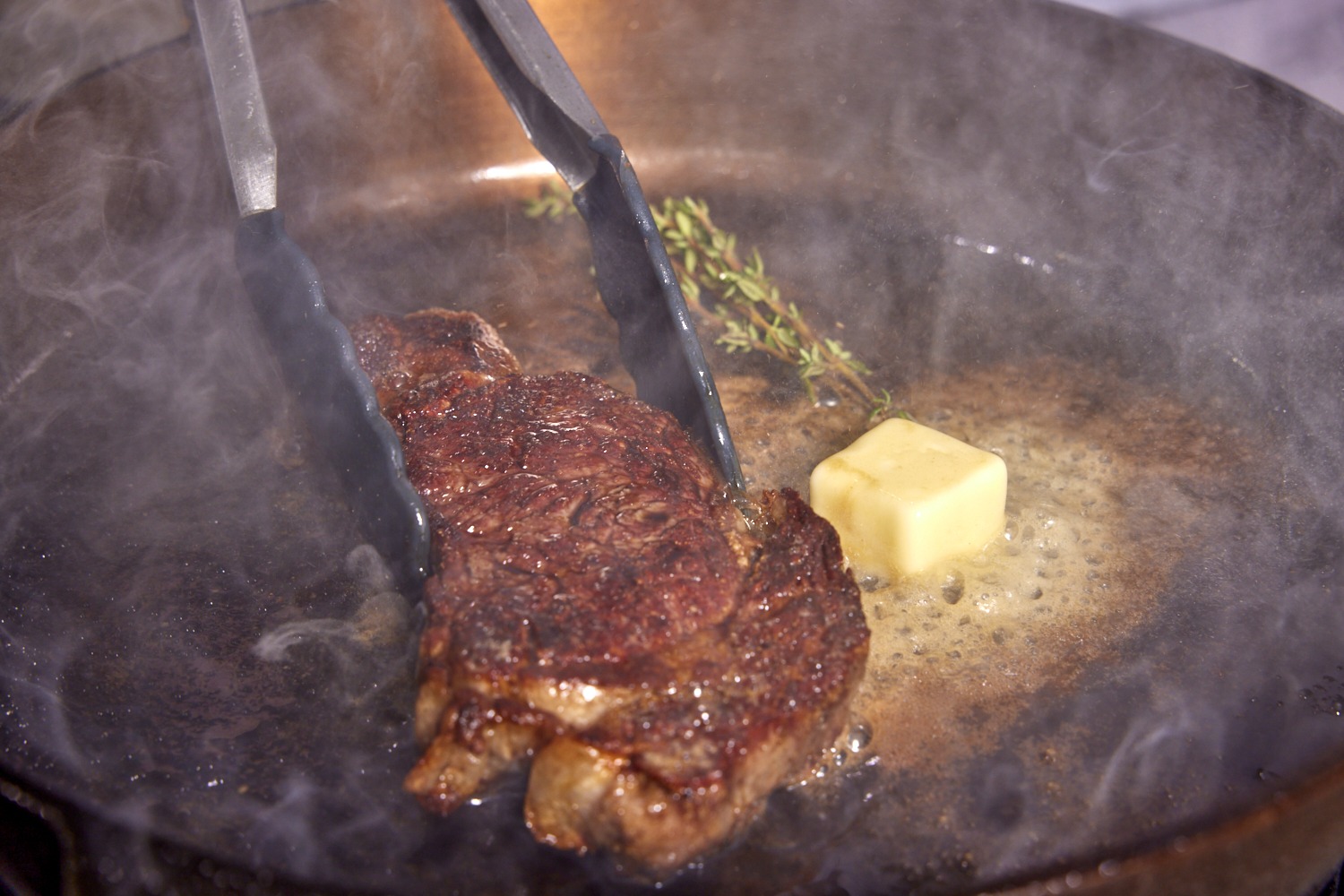
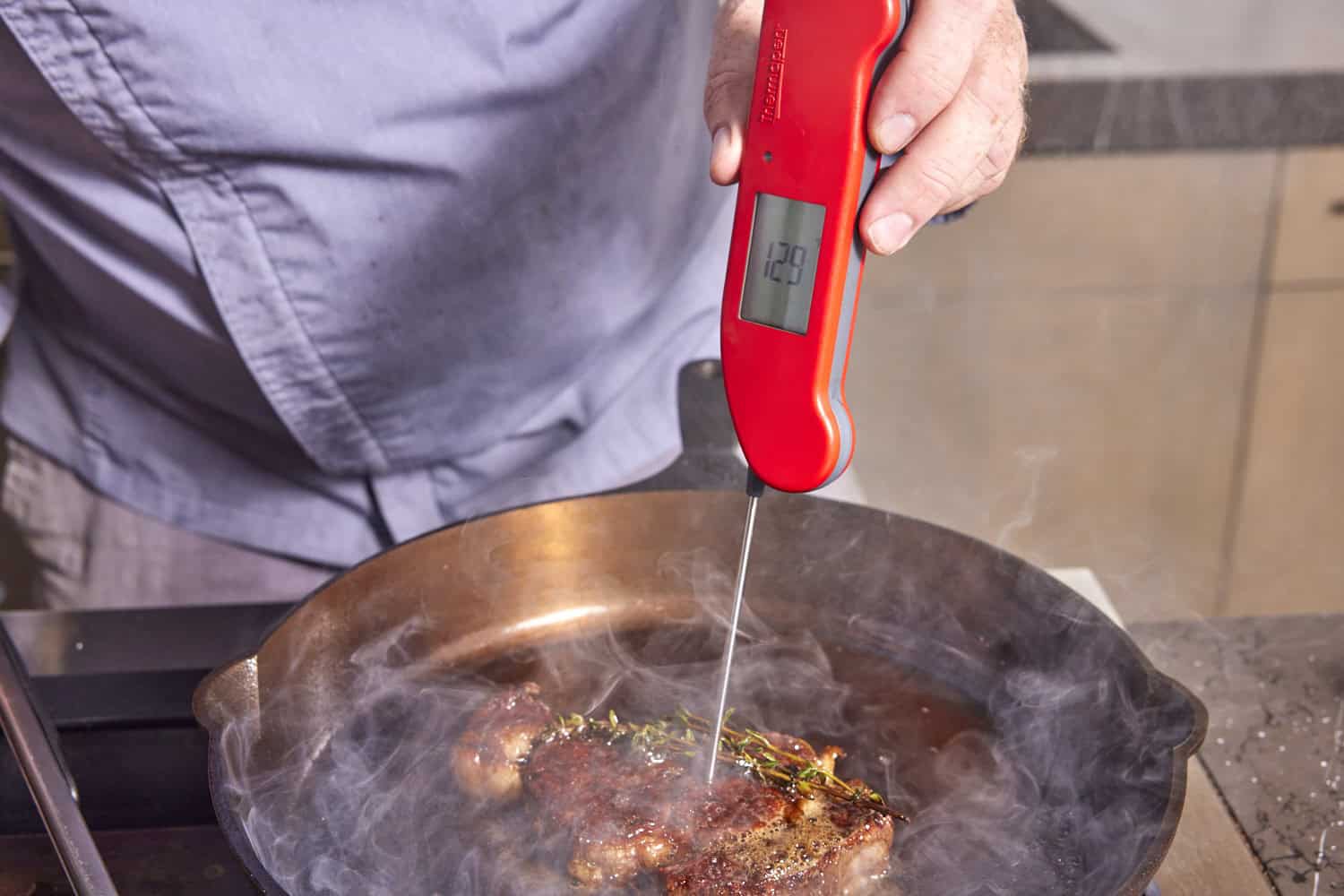



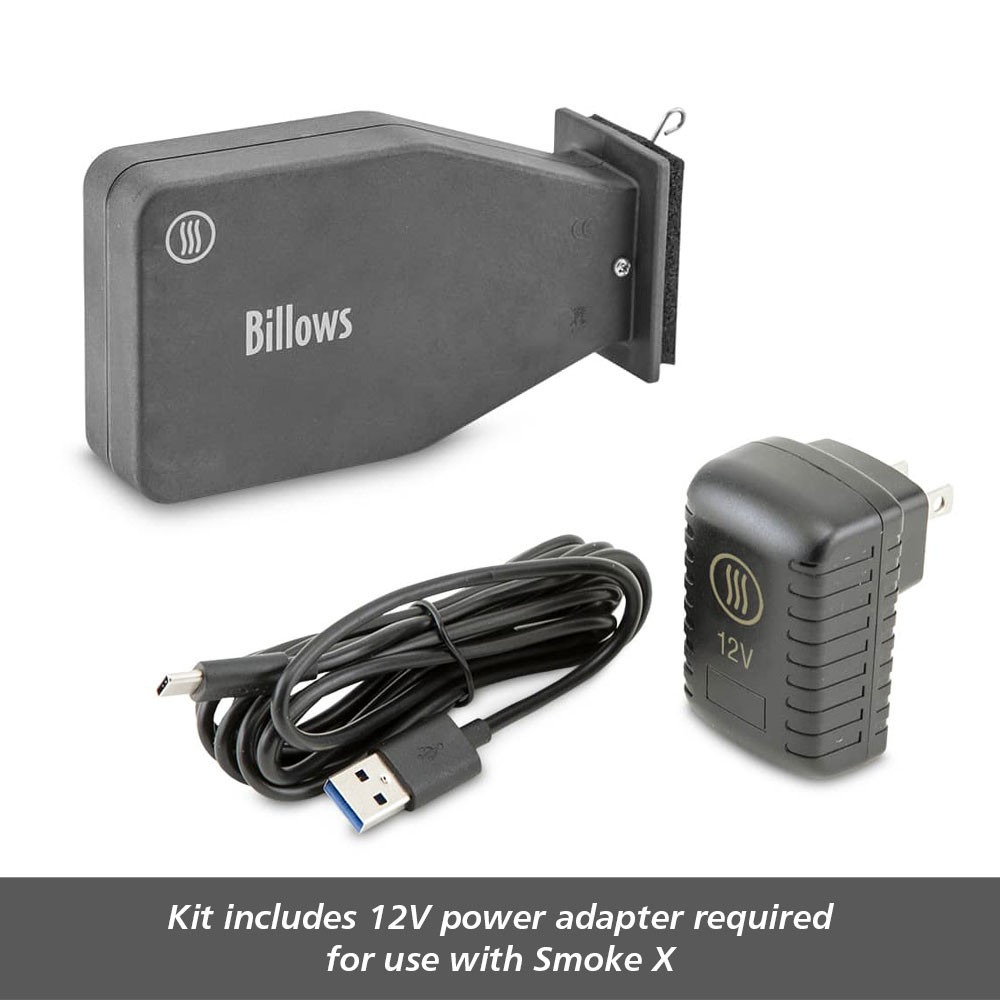

can you show the smoke x/ billows set up?
We put the thermometer unit on top of the fridge with the air probe dangling next to it. We ran the billows into the fridge and set it next to one wall, pointing up, with the cable coming out the door. We plugged the whole thing and the fan blew constantly for the entire aging process.